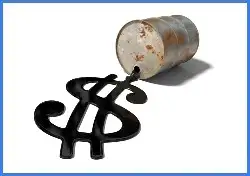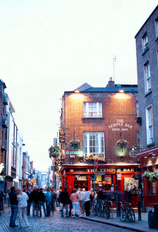
We’ve all had to adjust to rising fuel costs. Perhaps you’re riding the bus or carpooling more, being extra careful to turn off unused lights and appliances, or even cutting frivolous purchases in order to afford to fill your gas tank each week. Cruise lines are right there with us—if you think your fuel costs are high, you should see their oil bills. It’s not cheap to power a 3,000-passenger cruise ship.
While some of the cruise lines’ solutions to the oil crisis are pretty obvious—anyone who’s booked a cruise in the last year can tell you about the fuel surcharge added to their cruise fare—while others may take you by surprise. If you’re wondering how your next vacation at sea will be affected by cruise lines’ fuel-saving measures, here are some changes to look for:
Fuel Surcharges
The most visible effects of the high cost of fuel have been surcharges—extra fees tacked onto cruise fares to cover some of the lines’ rising fuel costs. In fall 2007, cruise travelers were smacked with their first round of fees, which then proceeded to go up … and up … and up through the spring of 2008.
Oil prices are finally falling, leaving cruise travelers questioning why the surcharges haven’t been revoked. But even with oil around $65 a barrel, cruise lines are still struggling with increased costs and need the surcharges to make up for losses incurred before they implemented or raised the fees. The good news is most industry experts agree that surcharges will soon vanish. Cruise Industry Analyst Tony Peisley says, “The fact is that fuel surcharges will disappear as soon as the lines can get rid of them because they are bad for business. No one likes being charged again after paying for something once. If fuel prices now stabilize—even at a relatively high level—they will probably be gone from 2010 because they will simply be costed into those prices.”
So if fuel costs continue to drop, you can kiss those surcharges goodbye. In fact, Royal Caribbean and Carnival have already announced they will get rid of fuel surcharges on 2009 (RCCL only) and 2010 cruises. But we may also see cruise fares go up.
Dropped Ports and Altered Itineraries
“With the unusually high fuel costs, there’s pressure to take another look at our itineraries,” says Diana Block, vice president of revenue management and deployment for Royal Caribbean. The cruise line and its competitors are trying to find ways to move ships around in a more fuel-efficient manner, so instead of raising fares or increasing surcharges, they can lower costs altogether. However, some post-publication itinerary changes have left booked passengers in the dark, wondering why ports have been dropped and itineraries altered.
While few appreciate last-minute changes, cruise lines consider the best interests of passengers when rearranging port calls. Block says that Royal Caribbean is only changing itineraries that aren’t heavily booked and making sure the new itineraries still offer passengers a good experience. For example, Explorer of the Seas’ fall 2009 itinerary originally offered four ports of call in Canada (with most of the stops being half or three-quarter days). The new, more fuel-efficient itinerary features six ports—two in Canada and four in New England (and all but one day are full days in port)—arguably a better passenger experience.
No need to get paranoid about rampant itinerary changes. Most of the fuel-related changes for published cruises have already been made, and the cruise lines will work these adjustments into itinerary planning for unannounced seasons. But, as oil costs fall, far-flung ports like Aruba won’t be completely abandoned by cruise lines.
Arrival/Departure Time Adjustments
Cruise lines have another, less dramatic way to alter itineraries for fuel efficiency. They can tweak a ship’s arrivals and departures from port by a barely noticeable chunk of time (a half hour or hour) to allow for slower travel and better fuel economy.
Cruise lines study passenger behavior carefully before making adjustments, as they don’t want their guests to feel rushed in port. Brad Anderson, co-president of America’s Vacation Center, told us that cruise lines track passenger departures from and returns to ships in port. “Previously, competitive pressure was high to stay late in port,” Anderson says. “But the cruise lines found that most people came back earlier than the [all-aboard time].” If the cruise lines alter their time in port by an hour, it doesn’t affect the amount of time most passengers stay off the ship, but it does help cruise lines save tremendously.
Behind-the-Scenes Changes
You likely won’t see most of the creative solutions cruise lines are using to reduce costs because they’re behind-the-scenes, technical changes. Some innovative ideas include: Adding hull coatings that reduce drag in the water and retrofitting engines to make them more efficient; setting air conditioning systems to turn off in rooms not being used; replacing incandescent and halogen light bulbs with energy-efficient fluorescent lighting; and employing low-flow shower heads, dishwashers and laundry machines. Not only are these great short term solutions for today’s high fuel prices, but these measures will continue to make cruising a greener and more affordable vacation choice long after the current oil crisis ends.
We hand-pick everything we recommend and select items through testing and reviews. Some products are sent to us free of charge with no incentive to offer a favorable review. We offer our unbiased opinions and do not accept compensation to review products. All items are in stock and prices are accurate at the time of publication. If you buy something through our links, we may earn a commission.
Related
Top Fares From
Today's Top Travel Deals
Brought to you by ShermansTravel
Greece: 9-Night Vacation, Incl. Meteora &...
Exoticca
 vacation
$2149+
vacation
$2149+
London to Reykjavik: Luxe, 10-Night Northern...
Regent Seven Seas Cruises
 cruise
$8175+
cruise
$8175+
Shop and Save with Country Inns...
Patricia Magaña
 Hotel & Lodging Deals
Hotel & Lodging Deals



